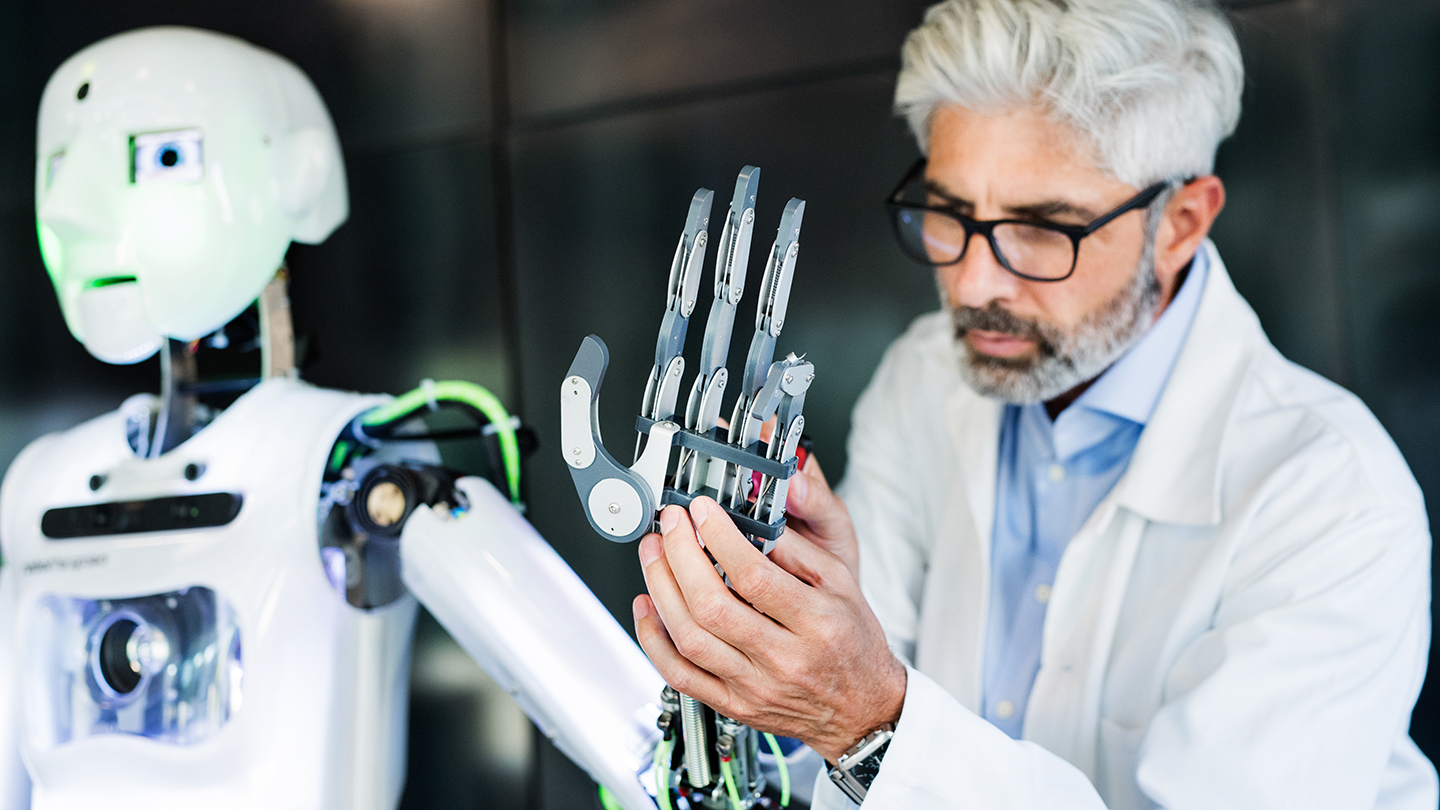
We humans are not designed to perform continuous hard physical labour, we do it because it is our job, but it wears us down. Hence, anything that can make our work lives easier has often proved to be a good business idea over the years. Moreover, the number of working age people here in the Western world is declining, so there will be fewer and fewer of us to keep the wheels turning and take care of the rising number of elderly. We will therefore have to work smarter.
This is where cobots come into the picture. The term cobot is derived from collaborative robot, which is a robot that works with you, in contrast to a classical robot, which is more autonomous. Cobots comprise an element of the investment theme robotics and automation, which is one of the equity market themes where we at Danske Bank see the most attractive return potential in the coming years.
How cobots work
Somewhat simplified, you could say that a cobot is a helper, and together you can accomplish a number of tasks. That could include lifting objects, which if done repeatedly would otherwise wear you down physically, or handling chemicals or hot objects.
Moreover, cobots do not require facilities to be heavily modified before you can use them, they can be recoded and thus used for several different tasks and, finally, prices have now fallen to more reasonable levels. This means cobots are also interesting for SMVs, which increases the opportunities and potential for sales. The healthcare sector is also an area with a huge potential for cobot use – for example, by helping with the more physical aspects of the job, such as lifting patients.


.png?h=128&iar=0&w=128&rev=c0456076148343a69ec27218e9fa39aa&hash=5367D3AD7CFBE8E78181A6587FAB2790)